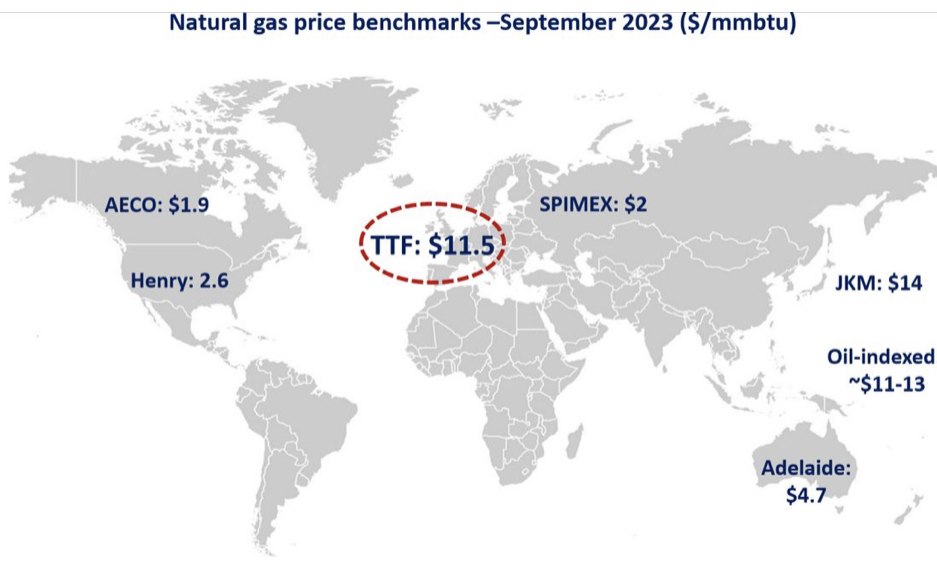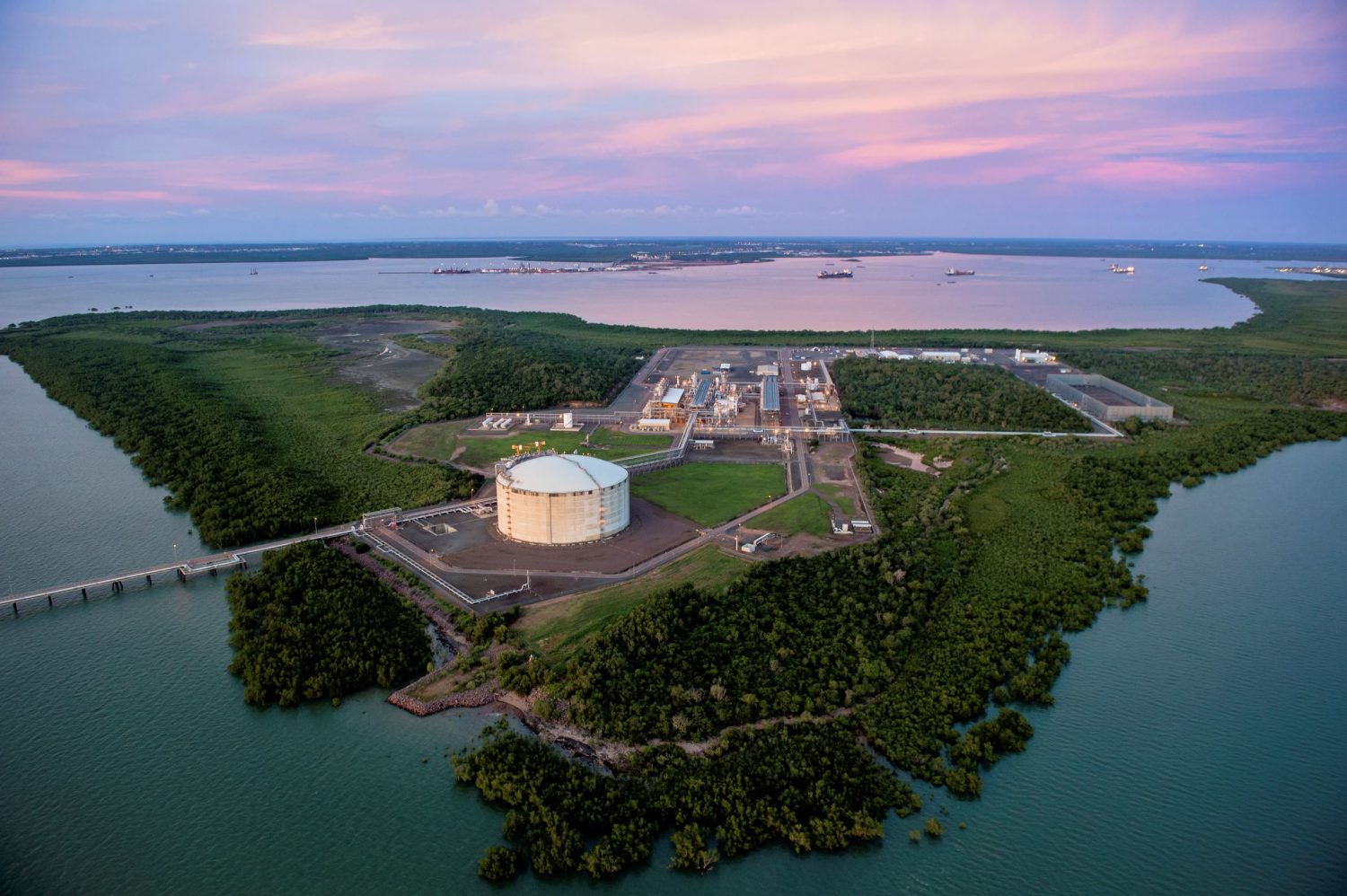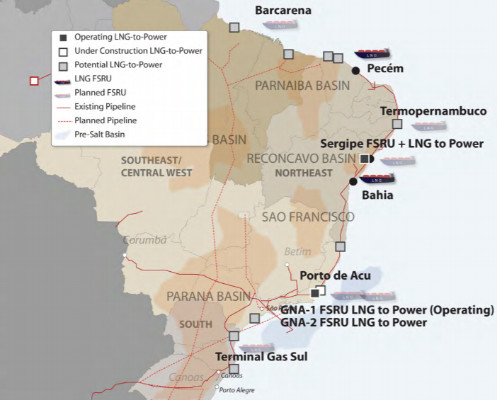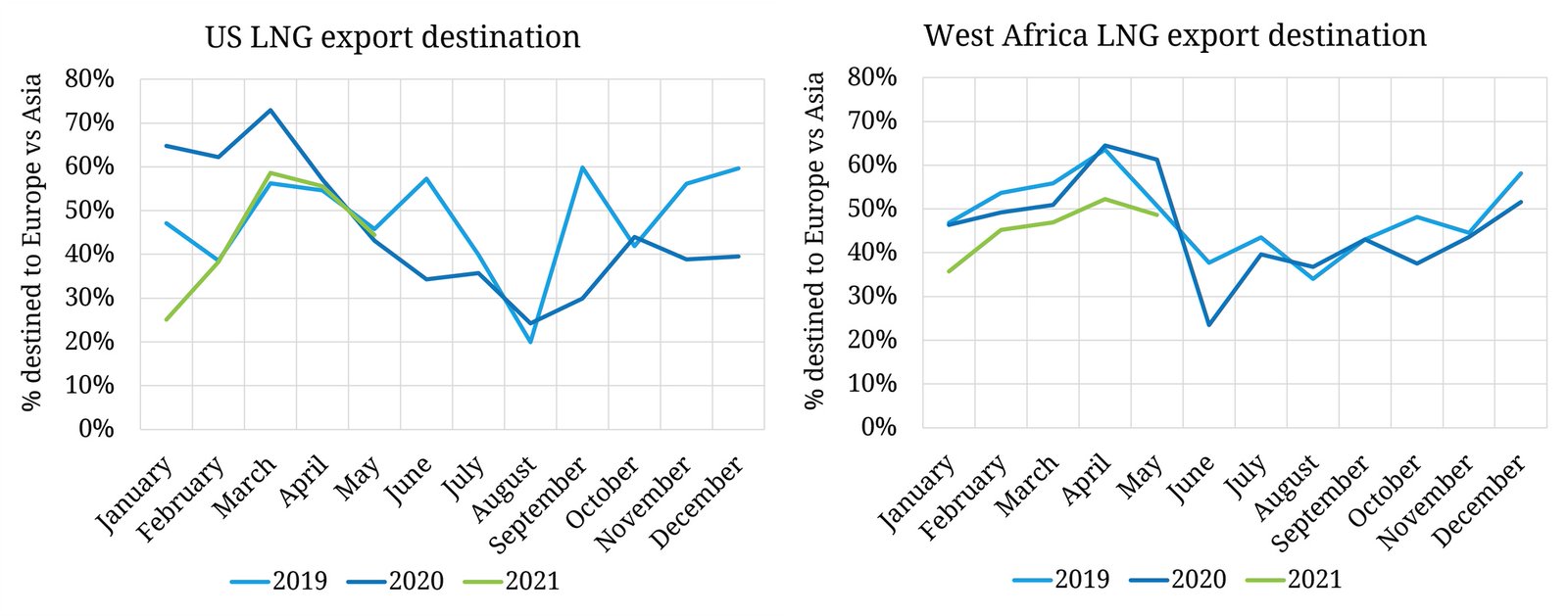

The new natural gas year is upon us: gas prices strengthened in September in all key gas markets, but remains well-below the record levels reached in 2022.
In Europe, TTF month-ahead prices rose by 3% month-on-month to $11.5/mmbtu. Lower Norwegian flows and reduced LNG inflows provided upward pressure on prices. Nevertheless, TTF prices stood 80% below last year’s levels as high storage levels (95% full) and subdued demand keeps gas prices in check.
In Asia, JKM prices rose by 14% month-on-month to $14/mmbtu. Australian strike risks together with the recovery in gas demand in China and emerging Asian markets strengthened spot LNG prices -which are now trading slightly above oil-indexed LNG prices.
Meanwhile, JKM’s premium over TTF rose to close to $2.5/mmbtu, which is sufficient to incentivise cargoes to drift away from Europe shores towards the more lucrative Asian markets. consequently, Europe’s LNG imports dropped by around 20% yoy in Sep – their steepest decline since Russia’s invasion of Ukraine.
In the US, Henry Hub prices rose by 2% to just above $2.6/mmbtu. Strong gas-fired generation, together with higher LNG exports (primarily from Freeport) provided upward support on gas prices.
Nevertheless, Henry Hub prices remain 65% below their last year’s levels amidst higher gas production and comfortable storage levels (5 bcm above their 5y average).
In Canada, AECO prices moderated down to below the $2/mmbtu mark, amidst strong production and high storage levels.
What is your view? How will gas prices evolve through the heating season? Volatility is here to stay? Will JKM maintain its premium over TTF? Do you see any downside risks for prices?
Source: Greg MOLNAR













